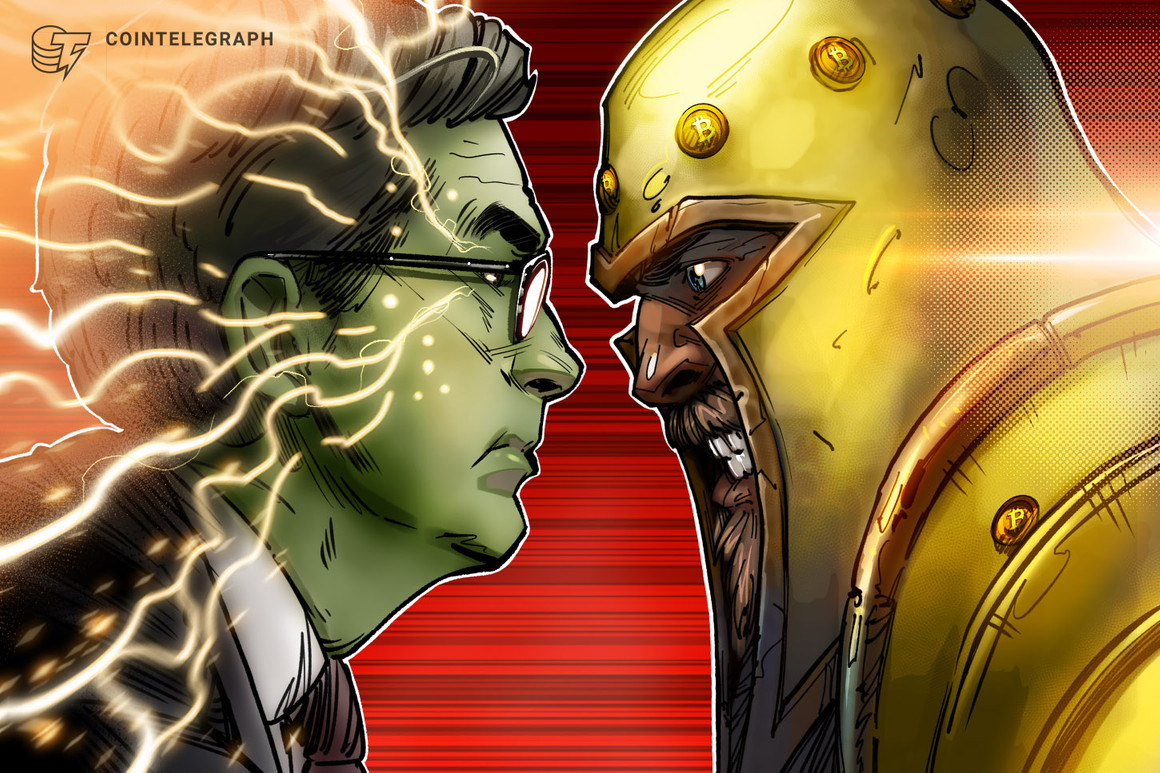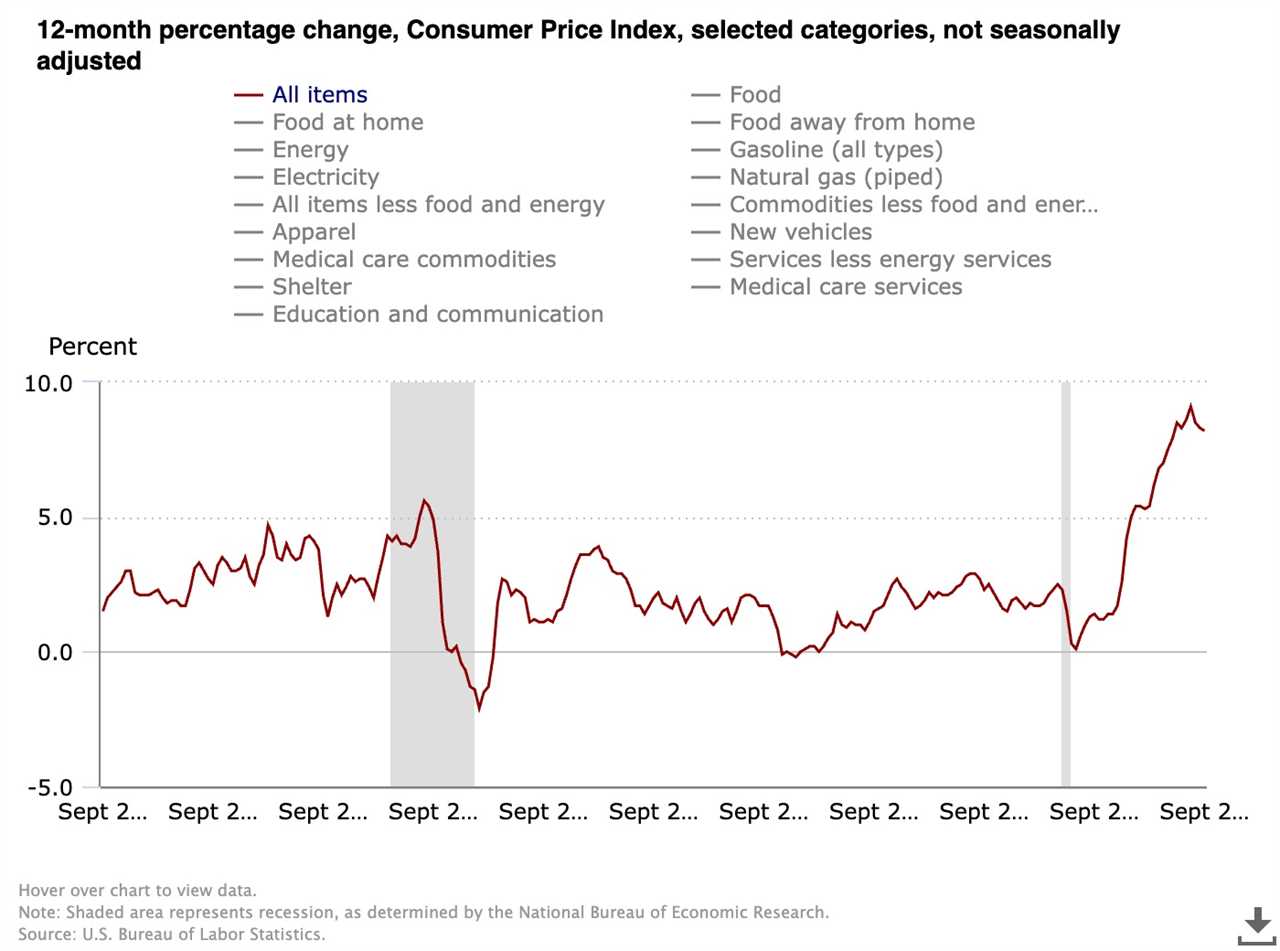
Much like a pandemic, inflation has spread throughout the world, clouding the future with dark uncertainty.
Disagreement over how to best manage soaring prices in the United Kingdom nearly caused its economy to collapse and subsequently led to the resignation of Prime Minister Liz Truss after just 44 days in office. Currently, at least 10 emerging economies are hyperinflationary, with more expected to follow. And the Federal Open Market Committee (FOMC), the part of the U.S. Federal Reserve responsible for keeping prices stable, just announced higher interest rate hikes in the midst of a return to positive gross domestic product — signaling continuing inflation troubles ahead.
The worldwide struggle to reduce inflation is tangible evidence that yesterday’s central bank tools are inadequate for today’s monetary problems. But hope for a brighter, sustainable tomorrow might be found in a technology least expected by policymakers: blockchains.
As the world’s de facto reserve currency, all countries rely on U.S. dollars for trade. When times are good, that seems to suit everyone just fine. But during times of high inflation, the purchasing power of dollars falls sharply, forcing other countries to buy more dollars to maintain stability. And yet, periods of high domestic inflation are exactly what compel the Fed to reduce dollar liquidity via interest rate hikes — effectively encumbering international dollar-buying. This dilemma between easing domestic inflation pressures while meeting the liquidity needs of the world is called the Triffin dilemma, and it arises whenever a credit-based national currency, like the U.S. dollar, is used as a global reserve.
Related: Jerome Powell is prolonging our economic agony
In practical terms, Triffin-impaired monetary policy causes financial crises originating in advanced developed countries to rapidly spread across the world. (The Triffin Dilemma does not spark high inflation in advanced economies; instead, it acts as an accelerant, like gasoline, that spreads high inflation everywhere, rapidly.) These crises disproportionately harm the poor, dramatically erasing many of the advancements in equity, economic security, and poverty reduction made during boom years, invariably causing global growth to end in global bust. This repeating boom-bust cycle, where great steps backward are made after every leap forward, highlights the critical need to reform and modernize our international monetary system.
Interestingly, we have known how to solve Triffin-related inflationary contagion long before Robert Triffin first identified the phenomenon in the 1960s. At the Bretton Woods Conference following World War II, John Maynard Keynes explained that Depression-era global inflation could be effectively managed by avoiding the use of national currencies for international trade and, instead, getting nations to agree to use a value-stable global reserve. Though Keynes’ proposal was never implemented, the idea was well ahead of its time.
As nearly eight decades have passed since Bretton Woods, let’s unpack what this means in 2022.
Back in 2009, in the midst of the last financial crisis, several countries called for Keynesian-like reforms, insisting on the use of the International Monetary Fund’s Special Drawing Rights — essentially, units of account backed by a basket of currencies — to be used more broadly as a global reserve. Thirteen years later, we can confidently say these proposals didn’t go anywhere. We still rely on U.S. dollars for international trade, and there appears to be little political will to change the status quo. Effective reform of the financial system, it seems, may not be possible through existing policy channels.

But something new and disruptive has been brewing over the last few years. The advent of blockchains has made creating new, counterfeit-resistant digital currencies a straightforward task, and a growing movement in peer-driven, non-central-bank finance (decentralized finance, or DeFi) has given rise to a global community of people willing to experiment with privately issued digital currencies.
In response to the growing use of these alternative currencies, nearly all of the world’s central banks are investigating the issuance of central bank digital currencies, or CBDCs. These are public digital dollars and euro and yuan powered by blockchains, implemented with the intention of rendering privately issued cryptocurrencies obsolete.
However, recent research by Linda Schilling and others revealed that CBDCs will likely fail over time. Specifically, there exists a CBDC trilemma, where CBDCs cannot simultaneously be financially stable, price stable, and efficient. In other words, CBDCs do not solve any of the problems we have with existing currencies, yet they create potentially catastrophic new problems under the guise of forward-thinking innovation.
A genuine solution, however, may be within sight. The collision of today’s extraordinary conditions, of new technologies and crises and communities, means it has never been easier for a private party to issue a scalable, non-inflationary reserve currency to complement the U.S. dollar. Not an anti-dollar per se, but a value-stable cryptocurrency, tailor-made to reduce inflation, and designed specifically for cross-border settlements — effectively solving the Triffin dilemma and alleviating inflation pain for billions of people.
To be fair, some have already attempted this. Ripple’s XRP (XRP) token was once touted as a possible global reserve, and some Bitcoin (BTC) enthusiasts support a total transition from fiat currencies to Bitcoin. However, in a Federal Reserve Bank of Philadelphia working paper, researchers showed that fiduciary cryptocurrencies — tokens backed solely by user trust — may be hyperinflationary over time if governments do not step in to limit the creation of competing cryptocurrencies. (The idea is that, if people keep making cryptocurrencies, one day there will be so many cryptocurrencies in circulation that all cryptocurrencies will eventually become worthless.)
Related: Mass adoption will be terrible for crypto
A truly viable global reserve currency will likely have to break from this fiduciary tradition and be anchored to a stable value.
But none of these concerns seem to be keeping software developers from experimenting with DeFi. There are cryptocurrencies designed for a variety of user needs, from privacy-focused tokens used largely for darknet market transactions to network-specific currencies used to power transaction verifications.
These types of limited practical use cases might be an important distinction for a viable reserve cryptocurrency. The point is not to compete with the dollar, but to give other nations an alternative to the dollar during periods of heightened volatility — in essence, an anti-inflation cryptocurrency to help shift the world away from endless boom-bust cycles and towards steady, sustainable global growth.
One day, many years from now, people will look back on what we did to prevent an impending global catastrophe. Were we content to fiddle with interest rates as the world descended into chaos, or did we commit to bold modernization during a time of great uncertainty? Whatever history remembers of us, the question our actions today will answer is this: If we are indeed living under a broken system where our best policy tools cannot save us from imminent economic failure, why are we not trying something new and different?
It is time for us to take courageous, decisive action and write a new Bretton Woods Agreement to safeguard the world’s future — but this time, in Solidity.
This article is for general information purposes and is not intended to be and should not be taken as legal or investment advice. The views, thoughts, and opinions expressed here are the author’s alone and do not necessarily reflect or represent the views and opinions of Cointelegraph.
Title: Inflation is killing us; cryptocurrency alone cannot beat it
Sourced From: cointelegraph.com/news/inflation-is-killing-us-cryptocurrency-cannot-beat-it
Published Date: Fri, 04 Nov 2022 19:59:33 +0000






